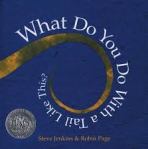This book is so touching, that honestly, it’s hard not to well up as I read it. I shared this book with my third graders for African-Am erican History Month in February.
erican History Month in February.
Love Twelve Miles Long is the story of young Frederick Douglass, whose mother travels 12 miles each weekend to see him. She works in the corn fields. Frederick works in the Big House. The story begins as she is about to leave to return to her work. She is tucking him in to sleep. Frederick asks her about her long walk back to her home. She tells him that each mile has a special meaning and helps make the journey shorter. The first mile is for forgetting, the second for remembering, the third for listening, the fourth for looking up, the fifth for wondering, the sixth is for praying, the seventh is for singing, the eighth is for smiling, the ninth is for giving thanks, the tenth is for hoping, the eleventh is for dreaming and the twelve is for love. Each mile is another expression of love for her son and hope that they will be able to live together as a family when they are free.
Colin Bootman’s illustrations are beautiful and bring Armand’s text to life. My students study Frederick Douglass’ life and know that he learned to read, became a free man and a great leader. Now they have the opportunity to imagine his life as a child.
 tudents from first grade to fourth grade. We started our discussion with things we could do to protect the earth. We talked a lot about litter clean up and the 4 R’s (Reduce, Reuse, Recycle and Rot). This book gave me the opportunity to introduce the importance of trees.
tudents from first grade to fourth grade. We started our discussion with things we could do to protect the earth. We talked a lot about litter clean up and the 4 R’s (Reduce, Reuse, Recycle and Rot). This book gave me the opportunity to introduce the importance of trees.



 My older students really enjoyed this book.
My older students really enjoyed this book.

